So Many Cool Historic VW Buses Led Us to the New VW ID. Buzz

Volkswagen introduced the new US-spec ID. Buzz in Huntington Beach on Friday, and to help celebrate the company organized a massive gathering of old-school VW vans from every generation ever sold in the States.
The first-generation T1 Type 2 is the one with the split windshield. Second-gen vans are often called Bay Windows because of their wide curved windshields. Some people call them the "Loaf of Bread" because of their shape. The Vanagon was the third generation, distinguished by its sharper edges and flat surfaces. And the Eurovan, or T4, was the last VW van sold in America, ending with the 2003 model year.
The official estimate for all the historic vans that showed up to help launch the new ID. Buzz was that there were 280 of them, with many owners popping the tops of their rigs and spending the night in the parking lot at Huntington Beach. Thank you, van owners, for bringing your historic Volkswagens. Can't wait till the new ID. Buzz goes on sale here in the US in the fall of 2024.
The second-generation VW van, the T2, was sold in the US from 1967 to 1979.

They were made around the world but we got ours from Germany, specifically from two plants, one in Hannover and one in Emden.
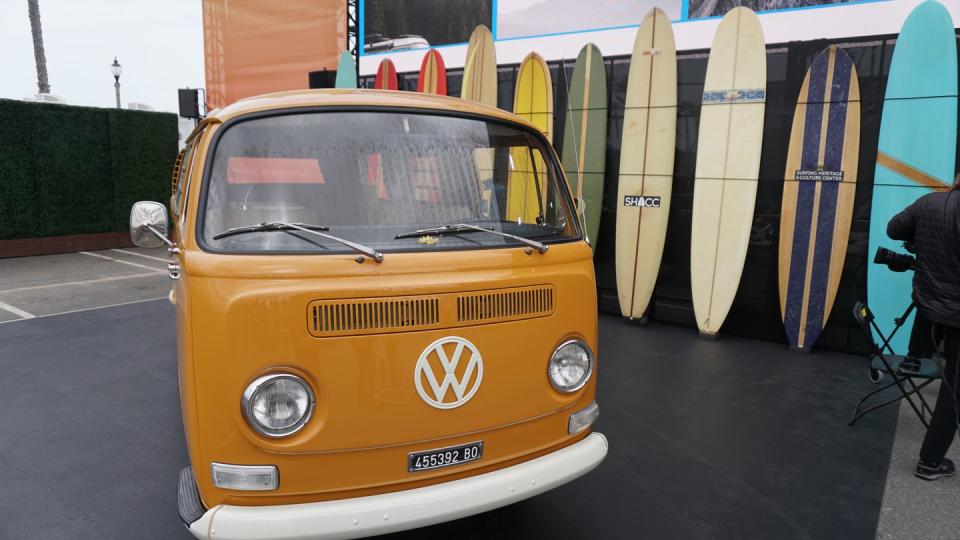
The Surfing Heritage and Culture Center in San Clemente loaned some historic surfboards to the ID. Buzz debut.

The Surfing Heritage and Culture Center has everything from Duke Kahanamoku's boards to Bruce Brown's 16mm camera and tripod.

The first VW van is often credited to Belgian importer Ben Pond, but Pond actually saw a jury-rigged Type 1 Beetle that had been converted to a sort of parts hauler at the factory. History does not record who made that.
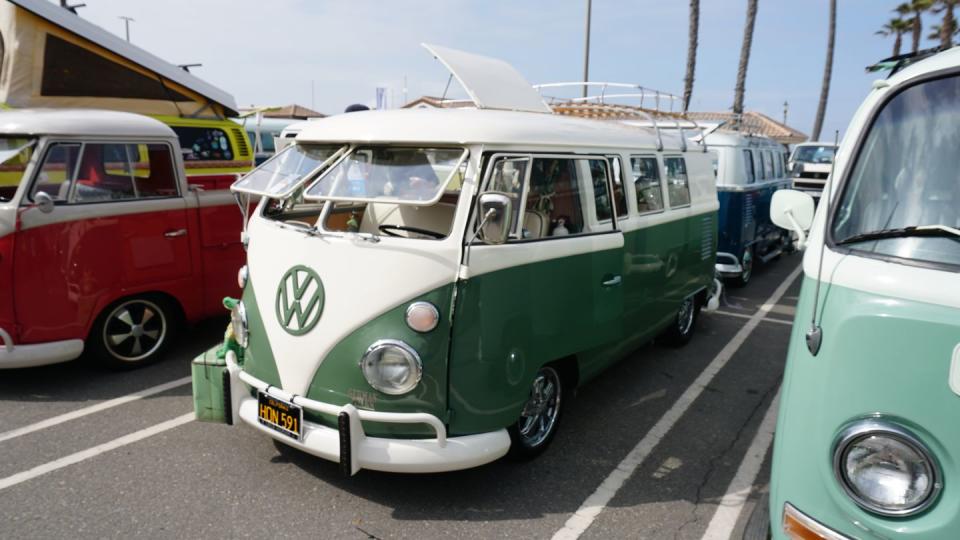
Because the van was Volkswagen's second model, after the Beetle, it was given the moniker Type 2.

A T2 Westfalia camper.
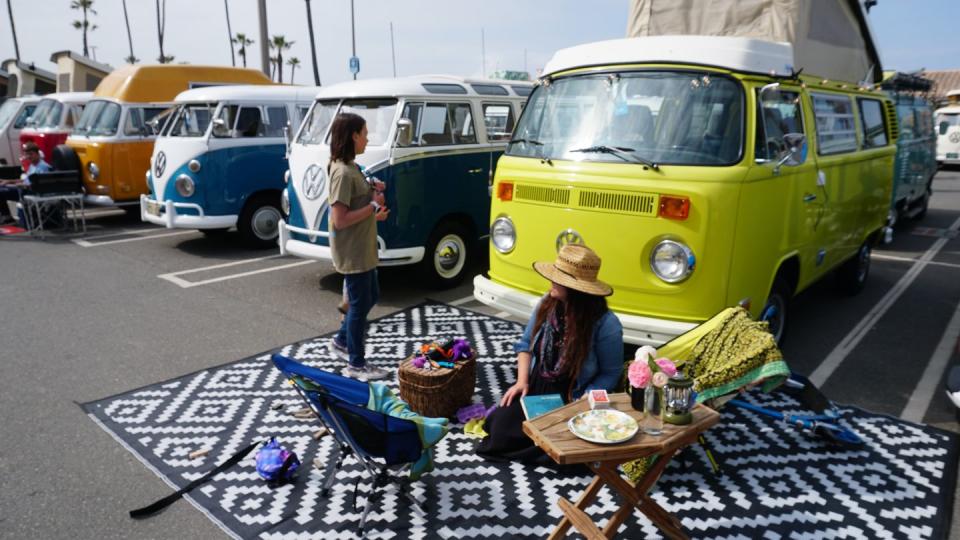
The first-gen vans come with many different configurations, but the most valuable ones have the most windows. The base models had 11 windows, others had 13, 21, and 23 windows.

The character Fillmore in the Cars movies was based on a VW van.
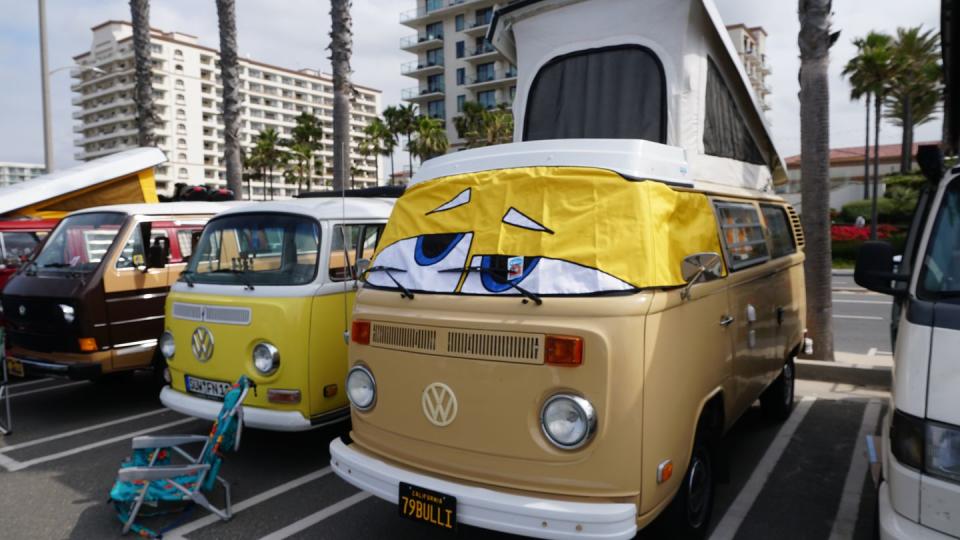
This dog was chasing after this little RC bus, barking its dog head off.
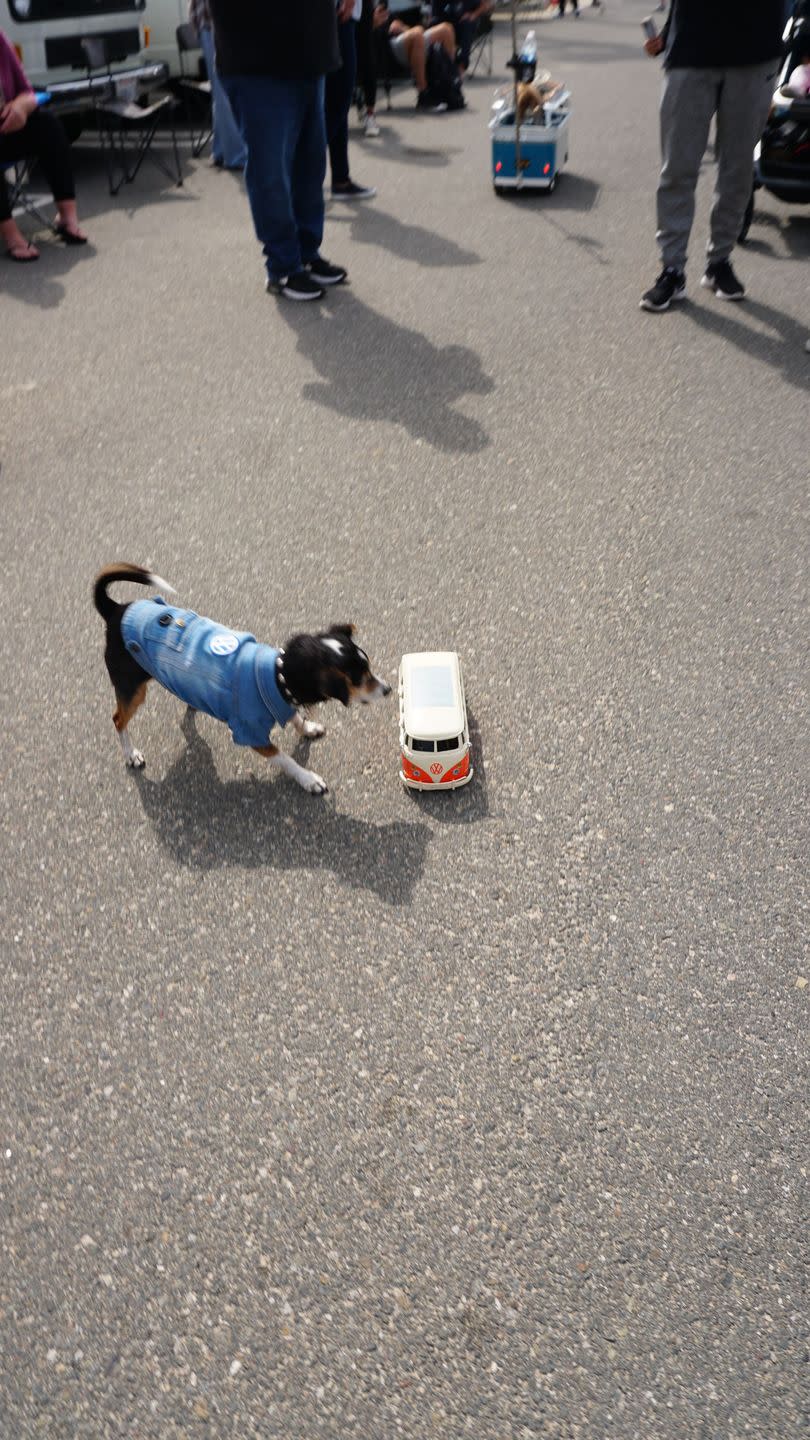
The dog then retreated to his own VW van.

The vans are often associated with hippies.

This Type 2 van was named Spencer.

Volkswagen subcontracted the modifications to the company Westfalia-Werke in Rheda-Wiedenbrück.

For a while, in the 1960s and '70s, people would cut the middle out of the vans to create these. Note the Gulf Oil livery.
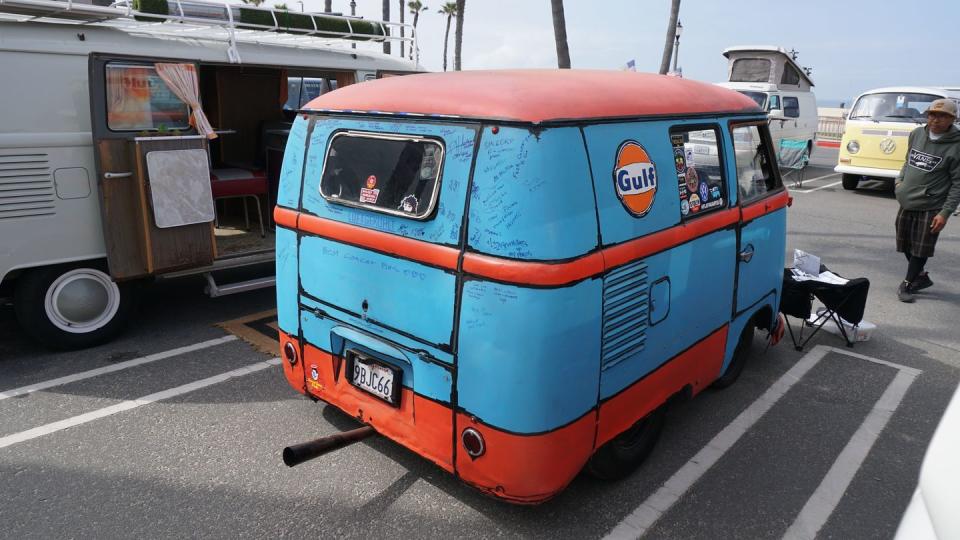
Here it is from the other side.
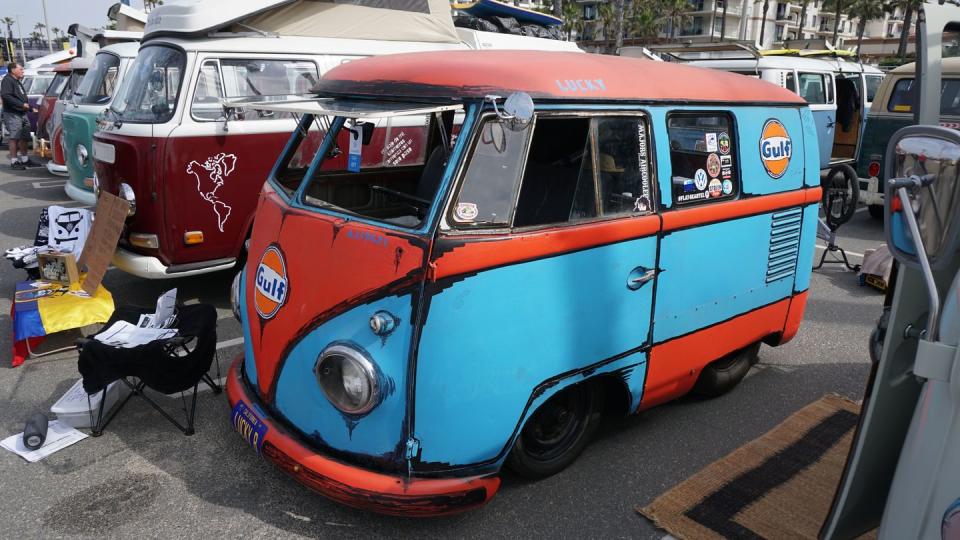
The Westfalia conversions offered everything you'd need to live in, or camp in, your van.

The fourth-generation T4 was sold in the US from 1990 to 2003.

Peace, man!

This T1 had doors on both sides.

 Yahoo Autos
Yahoo Autos 